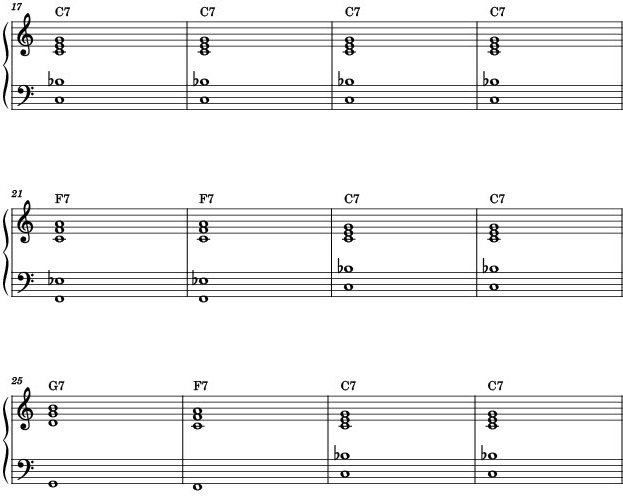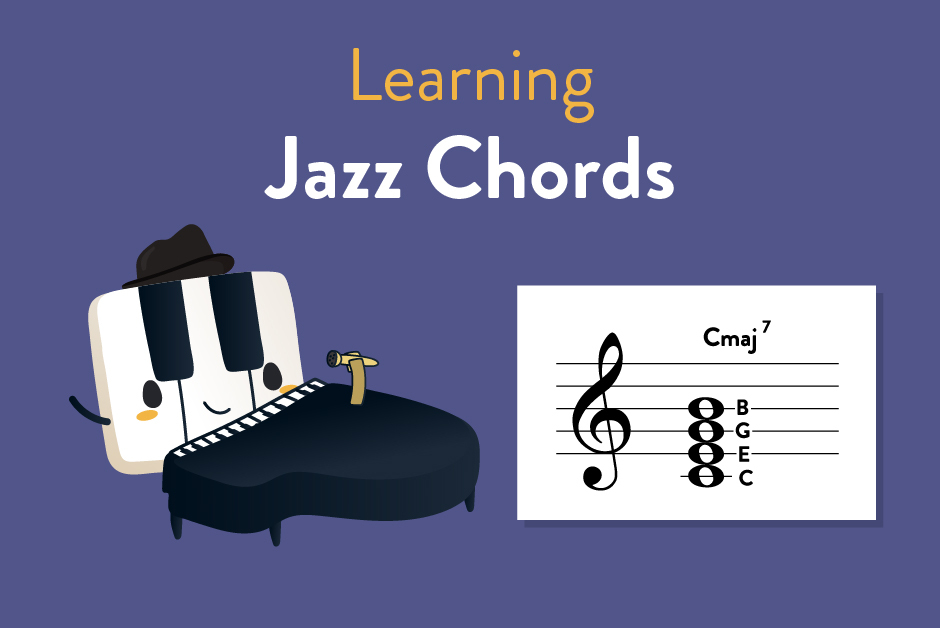Are you tired of guitar-pick-keeps-slipping/” title=”5 Questions to Ask Yourself if Guitar Pick Keeps Slipping”>strumming the same three chords over and over again like a broken record? Ready to break free from the shackles of G, C, and D and explore the vast world of chord progressions? Well, fear not, my aspiring guitar gods and goddesses, for I come bearing the keys to unlocking a whole new level of musical prowess. In this guide, we will embark on a journey to mastering basic chord progressions that will have you rocking out like a pro in no time. So grab your guitar, dust off those fingertips, and let’s dive into the wonderful world of chords!
Contents
- 1 Understanding Basic Chord Progressions: The Foundation of Music
- 2 Exploring the Major and Minor Scale Harmonies
- 3 Nailing the I-IV-V Chord Progression: Your First Milestone
- 4 Expanding Your Repertoire with the ii-V-I Progression in Jazz
- 5 Incorporating Minor Progressions for Emotional Depth
- 6 Mastering the Circle of Fifths to Unlock New Progressions
- 7 Applying Your Knowledge: Practice Techniques and Tips
- 8 FAQs
- 9 Keep Strumming and Rock On!
Understanding Basic Chord Progressions: The Foundation of Music
So, you want to understand basic chord progressions, huh? Well, buckle up because we’re about to dive into the foundation of music – the bread and butter of any song worth its salt.
Picture this: you’re a magician, and chords are your wand. Without a sturdy foundation of chord progressions, your musical spells will fall flat quicker than a pancake on a hot griddle.
Now, let’s break it down for you in terms even your grandma could understand. Chord progressions are like the building blocks of a song, the Lego pieces that snap together to create a musical masterpiece. Without them, your song is just a pile of musical rubble.
So, grab your guitar, piano, or kazoo (hey, we don’t judge) and start experimenting with different chord progressions. Mix and match major and minor chords, throw in some 7ths for flavor, and before you know it, you’ll be a chord progression wizard, casting musical spells left and right.

Exploring the Major and Minor Scale Harmonies
Have you ever wondered how musicians create those beautiful harmonies that make your heart soar and your toes tap? Well, wonder no more, because we’re diving deep into the world of major and minor scale harmonies!
Let’s start with the major scale, shall we? Picture a sunny day, birds chirping, flowers blooming. That’s the major scale for you. It’s bright, happy, and oh-so-cheerful. So how do we create harmonies from this feel-good scale? By stacking those notes like a musical Jenga tower, of course!
Now, on to the minor scale – the brooding, mysterious cousin of the major scale. Think foggy nights, howling wolves, and spooky ghost stories. The minor scale is all about those haunting, emotional harmonies that give you all the feels. It’s like the soundtrack to a dramatic movie scene, where the hero faces their biggest challenge yet. To create minor scale harmonies, we simply stack those notes in a slightly different order than the major scale, giving us that dark and moody sound we all love.
So, there you have it – major and minor scale harmonies in a nutshell. Whether you’re feeling sunny and upbeat or dark and mysterious, these scales have got you covered. So grab your instrument, let your creativity flow, and start exploring the endless possibilities of harmonizing in major and minor keys!

Nailing the I-IV-V Chord Progression: Your First Milestone
So you’ve finally mastered the basics of guitar playing and you’re ready to take on the I-IV-V chord progression. Congratulations! This is your first milestone in becoming a rockstar. Let’s break down this simple but essential chord progression so you can nail it like a pro.
First up is the I chord. This is your home base, the comfort zone of chords. It’s where you start and end your progression. Next, we have the IV chord. Think of this as your detour – a little change of scenery before heading back to the familiar I chord. And finally, the V chord. This is your big moment, the climax of the progression. It adds tension and leads back to the resolve of the I chord.
Now, let’s practice transitioning between these chords smoothly. Remember, practice makes perfect! And don’t be afraid to experiment with different strumming patterns and rhythms to make the progression your own. Before you know it, you’ll be playing this classic chord progression with confidence and style.
So keep strumming, keep practicing, and keep rocking out. You’re on your way to becoming a guitar hero, one chord progression at a time. Rock on!

Expanding Your Repertoire with the ii-V-I Progression in Jazz
Are you tired of playing the same old jazz standards over and over again? Looking to spice up your repertoire and impress your fellow musicians? Look no further than the ii-V-I progression!
With its smooth and harmonically rich sound, the ii-V-I progression is a staple in jazz music that every musician should have in their toolbox. By mastering the ii-V-I progression, you’ll be able to navigate through complex chord changes with ease and add a touch of sophistication to your playing.
Not sure where to start? Here are a few tips to help you expand your repertoire with the ii-V-I progression:
- Learn the basic theory behind the ii-V-I progression: Understanding the relationship between the chords will help you make sense of the progression and improvise more effectively.
- Practice in different keys: Don’t limit yourself to one key – experiment with different keys to expand your musical horizons and challenge yourself.
- Listen to recordings of jazz musicians using the ii-V-I progression: Hearing how other musicians interpret the progression can give you inspiration and ideas for your own playing.
So what are you waiting for? Start incorporating the ii-V-I progression into your playing today and watch your musical capabilities soar to new heights!
Incorporating Minor Progressions for Emotional Depth
When it comes to adding emotional depth to your music, minor progressions are a key tool in your arsenal. They can evoke feelings of sadness, longing, and introspection, allowing you to connect with your audience on a deeper level.
One way to incorporate minor progressions into your music is through subtle shifts in chord structure. By adding a minor chord here and there, you can create a sense of tension and release, drawing your listeners in and keeping them engaged.
Another technique is to use minor scales to create melodic lines that are haunting and melancholic. These haunting melodies can add a layer of complexity to your music, making it more compelling and emotionally resonant.
Don’t be afraid to experiment with different combinations of minor chords and scales. You never know what kind of emotional depth you might uncover in the process. Remember, music is all about exploring new possibilities and pushing boundaries, so don’t be afraid to get a little weird with it!
Mastering the Circle of Fifths to Unlock New Progressions
Are you tired of playing the same old chord progressions on your guitar or piano? It’s time to level up your music theory game and learn how to master the Circle of Fifths! Once you understand this powerful tool, you’ll be able to unlock a whole new world of exciting chord progressions that will impress your friends and fans alike.
One of the most amazing things about the Circle of Fifths is how it can help you understand the relationship between different keys. No longer will you be stuck in the same old boring key – with the Circle of Fifths, you can easily move between keys and create interesting modulations in your music. Say goodbye to playing in C major all the time and hello to exploring the rich harmonies of more complex keys like D major or G sharp minor.
Another great thing about the Circle of Fifths is how it can help you come up with unique chord progressions that will make your music stand out. By following the pattern of fifths, you can create sequences of chords that flow together smoothly and sound incredibly satisfying to the ear. Gone are the days of playing the same tired old I-IV-V progression – with the Circle of Fifths, you’ll be composing chord progressions that will blow your mind.
So if you’re ready to take your music to the next level, it’s time to start mastering the Circle of Fifths. With this powerful tool in your arsenal, you’ll be able to unlock a whole new world of exciting chord progressions that will take your music to new heights. Get ready to amaze yourself and your audience with your newfound skills – the Circle of Fifths is waiting for you!
Applying Your Knowledge: Practice Techniques and Tips
So you’ve acquired all this knowledge, but now what? How do you actually apply it in a practical setting? Fear not, for I have some practice techniques and tips that will help you do just that!
First and foremost, **repetition** is key. The more you practice something, the better you’ll get at it. So don’t be afraid to repeat that knowledge over and over again until it’s ingrained in your brain!
Secondly, **break it down**. If you’re struggling with a particular concept, try breaking it down into smaller, more manageable parts. This way, you can tackle each piece individually and then put it all together like a jigsaw puzzle.
Lastly, **mix it up**. Don’t just stick to one method of practice – try different techniques to keep things interesting. Whether it’s flashcards, quizzes, or hands-on activities, variety is the spice of life (and learning)!
FAQs
Why are chord progressions important for beginner guitarists?
Chord progressions are like the secret sauce of music. They give your songs flavor, depth, and that certain je ne sais quoi that makes listeners go, “Wow, this guitarist really knows what they’re doing!”
How can I memorize common chord progressions?
Think of chord progressions like the lyrics to your favorite song – repeat them over and over until they’re stuck in your head! Practice, practice, practice until you can play them in your sleep.
What are some common chord progressions that every beginner guitarist should know?
Ah, the classics! The I-IV-V progression, the ii-V-I turnaround, and the timeless I-V-vi-IV progression are must-haves in your chord progression arsenal. Once you’ve mastered these, you’ll be well on your way to guitar greatness!
How can I spice up my chord progressions and make them more interesting?
Get creative, my friend! Add some seventh chords, throw in a fancy inversion or two, experiment with different rhythmic patterns – the world is your oyster when it comes to making your chord progressions pop!
Any tips for mastering barre chords within chord progressions?
Barre chords can be a real pain in the…fingers. But fear not! Practice proper finger placement, adjust your wrist angle, and don’t be afraid to take breaks to stretch out those cramped digits. Before you know it, you’ll be barre-ing like a pro!
Keep Strumming and Rock On!
Congratulations, you’ve unlocked the secrets to mastering basic chord progressions on the guitar! Now go forth, strum those chords with confidence, and impress all your friends with your newfound musical skills. Remember, practice makes perfect, so keep strumming along and soon enough you’ll be rocking out like a guitar god. And who knows, maybe one day you’ll even be headlining at Wembley Stadium! But for now, just enjoy the journey and have fun making music. Keep on strumming and rock on!



